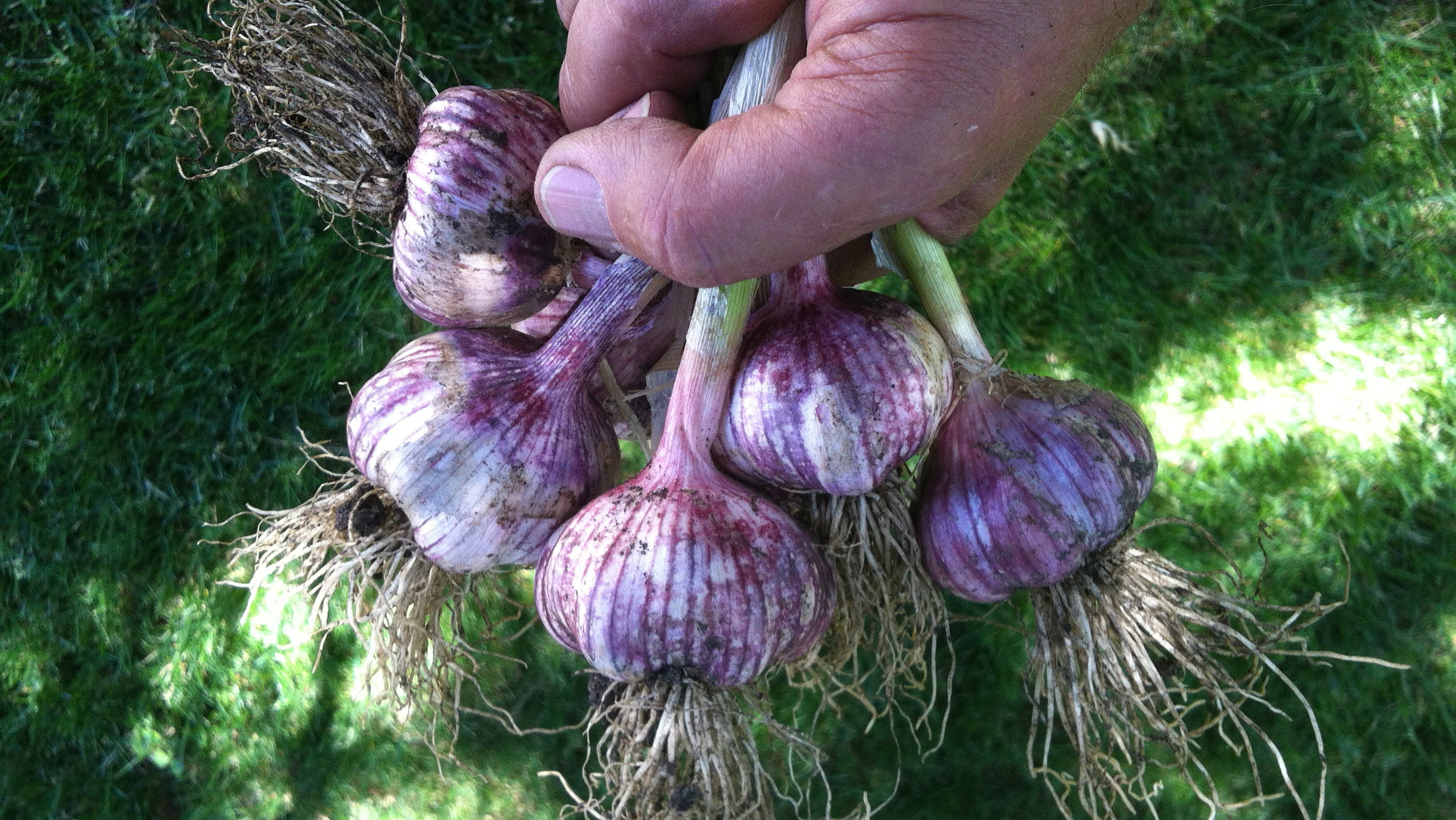
It’s time to harvest your summer crops, but that doesn’t mean it’s the end of gardening season, says expert gardener Larry Stebbins.
His book, released earlier this year, gives Front Range and Rocky Mountain gardeners a month-by-month guide to backyard vegetable gardening. Read his tips below for end of the summer gardenening, and listen to the audio above to hear him try the world's hottest garlic variety with "Colorado Matters" host Ryan Warner.
1) Tough year for tomatoes
If your tomatoes were slow coming in this year, you aren’t alone. The cool, wet summer delayed their development. Trim up about 18 inches from the ground so the sun can warm the soil near the plant and speed up ripening. You can also pick them green and let them ripen in your kitchen. When you do pick them, use a scissors to avoid damaging the tomatoes.
2) Root vegetables are a fall treat
How do you know when you carrots are ready? Scrape around the top to see if they are large -- and sweet -- enough to dig up. Most root vegetables sweeten toward the end of their growing cycle. But they can be picked any time, even as late as November. Next year, try planting the sugar snax variety -- they sweeten as they grow so they are ready to pick whenever you want.
It’s not too late to plant for a late fall harvest, either. Try the big German beer radish -- it should be ready to harvest at the end of October. Slice off pieces for salads and stir fries.
3) Know how much to grow
A 20-foot by 20-foot plot can grow enough produce to feed a family of two. If you play your cards right, you can grow hundreds of pounds of produce in a relatively small area. And keep vigilant: “You have to replant,” Stebbins says. “When you pick a carrot, plant another seed in its place.”
Be sure to plant a variety of crops. Squash and zucchini are ripening fast now and it can be a challenge to use them all at once. Balance later-blooming squash with leafy greens that ripen in the heat of the summer.
One popular leafy green is kale. Plant it in the late spring and it will provide fresh greens through most of the year. When you harvest, pick the outer leaves and let the rest of the plant grow. It’ll last until the first hard frost. Try dinosaur kale, also known as tuscan kale, for kale chips that hold onto whatever spices you sprinkle on top.
4) Manage pests
Powdery mildew is a common problem on squash on the Front Range. It appears as white, dusty spots on the vegetables. Try using neem oil to manage it. Neem oil is a mild pesticide, so apply it at night after bees have gone to bed. Bees are especially sensitive to pesticides and are vitally important to our food supply.
If ants make a home in your garden, try spraying the area with orange oil. You can buy it at garden supply stores or make your own by boiling orange peels. If that doesn’t work, mix boric acid (Borax) and mint jelly and place it near the ant hill. Prevent ants from making their home in your garden in the first place by keeping the soil rich and moist, since they prefer dry dirt.
Voles, also known as meadow moles, can be a big problem. Mix one part castor oil with nine parts water to repel them. Punch long holes in the soil and dump in the mixture. If that doesn’t work, lay chicken wire underneath your beds.
5) Get ready for next year
Now’s the time to prepare your soil for next year. Mix compost with manure into your soil and keep it moist by covering it with six to eight inches of mulch.
Some fruit can be planted now; it’ll take root and then go dormant until spring. Raspberries, strawberries and rhubarb are good bets for spring produce.







